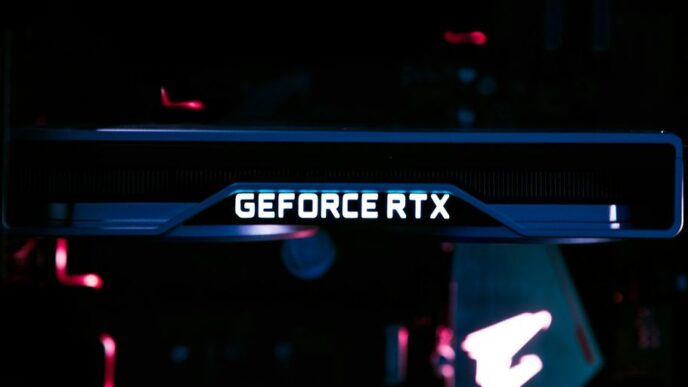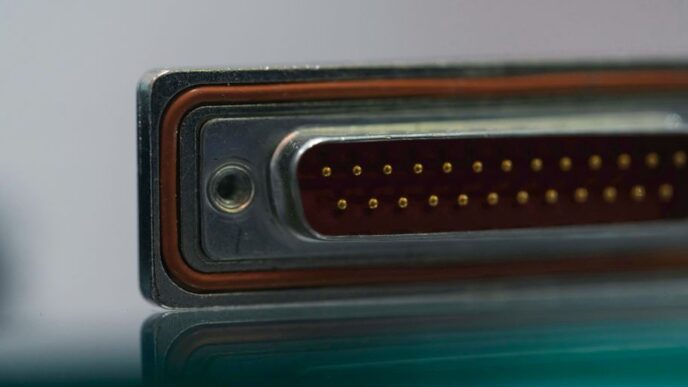Picking the right charger can feel like a big deal, especially with so many options out there. It’s not just about getting power to your stuff; it’s about making sure your devices last and charge safely. This guide is here to help you figure out what really matters when you’re looking for the best charger in 2025, so you can make a smart choice without all the fuss.
Key Takeaways
- Smart chargers offer better battery care and safety features, making them a good long-term choice, even if they cost more upfront.
- When picking a charger, think about your device type, how often you’ll use it, and your budget to get the best charger for your situation.
- Look for chargers with enough power (wattage) for your devices, and check if they can handle different battery types for more flexibility.
- Specific devices, like RC cars or laptops, need chargers designed for their unique power needs to work well and stay safe.
- Portable chargers are great for travel, but pick one with the right features, like fast charging and good capacity, to avoid low battery stress.
Understanding Charger Types
Smart Chargers Versus Basic Chargers
When you’re getting into RC cars, one of the first things you’ll notice is the variety of chargers available. You’ve got your basic, no-frills chargers, and then you have the smart chargers packed with features. Smart chargers are generally the better long-term investment. They can handle different battery types, offer safety features, and give you more control over the charging process. Basic chargers are cheaper upfront, but they might limit you later on.
When Basic Chargers Make Sense
Okay, so when do basic chargers make sense? Well, if you’re just starting out and have a Ready-to-Run (RTR) vehicle that came with a NiMH battery and a simple charger, it might be all you need for now. If you only use your RC car occasionally, like on weekends, a basic charger meets your needs without costing too much. These chargers are usually in the $20-$50 range and are designed for one specific battery type. It’s a good way to test the waters without a big investment.
Benefits of Smart Chargers
Smart chargers, on the other hand, are like the Swiss Army knives of the charging world. They support multiple battery chemistries – LiPo, NiMH, NiCd, Li-Fe, and more. This means you can use one charger for all your batteries, from your transmitter to your car. Plus, they have advanced safety features like balancing and cell monitoring, which protect your batteries from damage. Many can even revive older batteries that basic chargers can’t handle. The detailed display shows cell voltages and charge capacity, helping you track battery health. For anyone serious about the hobby, a smart charger pays for itself through better battery care and longer battery life.
Selecting the Best Charger for Your Needs
Choosing the right charger isn’t just about grabbing the cheapest option. It’s about finding a charger that fits how you use it, what you’re charging, and where you see yourself in the future. Think of it as an investment, not just an expense. You don’t want to end up with something that’s too weak or lacks essential features down the line.
Matching Charger to Scale and Usage
The first step is figuring out what you’ll be charging most often. Are you mainly charging small devices like phones, or larger items like laptops or RC car batteries? This will heavily influence the power output you need. For example, someone who only charges a phone occasionally will have different needs than a professional RC car racer who needs to quickly charge multiple batteries between heats. Consider the scale of your charging needs. If you’re into RC cars, the size of your vehicle matters too. 1/10 scale on-road cars need different charging setups than 1/8 scale off-road buggies. Think about how often you’ll be charging and how many devices you’ll need to charge simultaneously. This will help you determine if you need a multi-channel charger or just a basic single-port option.
Budget Considerations for Your Best Charger
Chargers range from budget-friendly to professional-grade, and the price often reflects the features and power they offer. It’s easy to get caught up in fancy features, but it’s important to set a realistic budget. A good approach is to identify the features that are essential for your needs and then look for chargers that fit within your budget while offering those features. Don’t overspend on features you won’t use. Here’s a general idea of what you can expect at different price points:
| Budget Range | Best Features | Ideal For | Power Level |
|---|---|---|---|
| $50-100 | Safety basics, LiPo/NiMH support | 1-2 vehicles, occasional use | 50-100W |
| $100-250 | Multi-chemistry, decent power, AC/DC | Growing fleet, regular use | 100-300W |
| $250+ | High power, multi-channel, data logging | Serious racers, large collections | 300W+ |
Future-Proofing Your Charger Investment
While it’s tempting to buy only what you need right now, it’s worth considering your future needs. Will you be expanding your collection of devices? Will you be getting into new hobbies that require different types of batteries? Buying a charger with a bit more power or versatility than you currently need can save you money in the long run. For example, if you’re just starting out with RC cars, you might only need a basic charger for NiMH batteries. But if you think you might upgrade to LiPo batteries in the future, it’s worth investing in a charger that supports both chemistries. This way, you won’t have to buy a new charger when you upgrade your batteries. Also, think about the types of devices you might own in the future. USB-C is becoming increasingly common, so a charger with USB-C ports is a good investment. Don’t buy something that will be obsolete in a year or two.
Top Charger Recommendations for 2025
Alright, let’s get down to brass tacks. You want to know which chargers are worth your money in 2025. I’ve been testing a bunch, and here are my top picks, broken down by category. Keep in mind, the ‘best’ really depends on what you’re charging and how you’re using it.
Best Overall Value Charger
For most people, you want something reliable that won’t break the bank. The Anker PowerPort III Nano is still a solid choice. It’s compact, delivers decent power, and is usually available at a reasonable price. It’s not the fastest, but it’s a great all-arounder for phones and smaller devices. If you are looking for something to charge your phone in the car, consider a car charger.
Beginner-Friendly Charger Options
If you’re new to the charging game, or just want something simple, look for chargers with clear labeling and automatic shut-off features. Avoid anything with too many settings or confusing displays. A basic USB-C wall charger from a reputable brand like Belkin or Aukey is a good starting point. They’re generally safe and easy to use. Here’s a quick comparison:
| Charger | Pros | Cons |
|---|---|---|
| Belkin USB-C | Simple, reliable, widely available | Not the fastest charging speed |
| Aukey USB-C | Affordable, compact | May not last as long as more expensive options |
| Samsung 25W | Fast charging for Samsung devices | Only ideal for Samsung devices |
Professional-Grade Chargers
For those who need serious power and features, professional-grade chargers are the way to go. These often include features like multi-channel charging, data logging, and support for a wide range of battery chemistries. If you’re into RC cars, you’ll want to check out chargers designed for off-road racing. Here’s a breakdown of what to look for based on your budget:
| Budget Range | Best Features | Ideal For | Power Level |
|---|---|---|---|
| $50-100 | Safety basics, LiPo/NiMH support | 1-2 vehicles, occasional use | 50-100W |
| $100-250 | Multi-chemistry, decent power, AC/DC | Growing fleet, regular use | 100-300W |
| $250+ | High power, multi-channel, data logging | Serious racers, large collections | 300W+ |
Don’t forget to consider a portable charger for when you are on the go.
Charger Features and Specifications
Power Output and Wattage Explained
Okay, so you’re looking at chargers, and you see all these numbers – amps, volts, watts. It can get confusing fast. The most important thing to understand is that wattage is what really determines how quickly your device will charge. Amps (A) and volts (V) combine to give you watts (W), using the formula: Watts = Volts x Amps. So, a charger that pushes out 5V at 2A is delivering 10W of power. A 2025 Dodge Charger Daytona needs a lot more than that!
Think of it like this:
- Low Wattage (5-10W): Good for phones, slow charging.
- Medium Wattage (15-45W): Tablets, faster phone charging.
- High Wattage (60W+): Laptops, power-hungry devices.
Multi-Chemistry Support
Back in the day, you needed a different charger for every type of battery. Thankfully, most modern smart chargers can handle a bunch of different battery chemistries. This is super useful if you’re into RC cars or other hobbies that use various battery types. Here’s a quick rundown of common battery types and what you need to know:
- LiPo (Lithium Polymer): Common in RC cars, drones. Require balance charging.
- NiMH (Nickel Metal Hydride): Older tech, but still used. More forgiving than LiPo.
- Li-Ion (Lithium-Ion): Found in phones, laptops. Usually have built-in charging circuits.
- NiCd (Nickel Cadmium): Pretty outdated, avoid if possible.
Make sure your charger explicitly states that it supports the type of battery you plan to use. Otherwise, you risk damaging the battery or even causing a fire. Seriously, don’t mess around with incompatible chargers.
Safety Features to Look For
Safety should be your top priority when choosing a charger. A cheap charger might save you a few bucks upfront, but it could cost you way more in the long run if it damages your devices or, worse, causes a fire. Here are some key safety features to look for:
- Overcharge Protection: Prevents the charger from continuing to pump power into the battery once it’s full. This is super important for preventing damage and extending battery life.
- Overcurrent Protection: Protects against excessive current draw, which can overheat the charger and your device.
- Short Circuit Protection: Shuts down the charger if it detects a short circuit, preventing fires and other hazards.
- Temperature Monitoring: Monitors the temperature of the charger and battery, and shuts down the charging process if things get too hot.
- Polarity Protection: Prevents damage if you accidentally connect the battery with the wrong polarity (positive to negative).
Don’t skimp on safety! Look for chargers from reputable brands that have been tested and certified by independent labs. It’s worth the extra investment for peace of mind.
Optimizing Charging for Different Devices
It’s not a one-size-fits-all world when it comes to charging. What works great for your phone might be terrible for your laptop, and vice versa. Let’s break down how to get the most efficient and safe charge for various devices.
Best Charger for RC Cars
RC cars demand specific charging approaches. The right charger can significantly impact performance and battery lifespan. You wouldn’t use the same charger for a tiny toy RC car as you would for a high-end racing model, right? Here’s a quick guide:
- Scale and Usage: Match the charger to the scale of your RC car and how often you use it. A casual user with one or two cars won’t need a super-powerful, expensive charger.
- Budget: Set a budget. Entry-level chargers are fine for beginners, but serious racers will need to invest more.
- Battery Type: Ensure the charger supports the battery type in your RC car (LiPo, NiMH, etc.).
For on-road and drift cars, precise charging is key. Consider a charger with 100-200W per channel for 2S-3S batteries. Off-road racing requires fast charging between sessions, so a higher-wattage charger is beneficial.
Best Charger for Laptops and Tablets
Laptops and tablets generally need more power than phones. A basic phone charger might keep them from dying, but it’ll take forever to actually charge them. Look for chargers that support USB Power Delivery (USB-PD). These chargers can negotiate with the device to deliver the optimal amount of power.
- Wattage: Check the wattage requirements of your laptop or tablet. A 65W charger is often sufficient for many laptops, but some power-hungry models might need 90W or more.
- Ports: Consider a charger with multiple ports if you want to charge your laptop and phone at the same time. Just make sure the charger can deliver enough power to all ports simultaneously.
- USB-PD: USB-PD is a must for fast and efficient charging. It allows the charger to communicate with the device and deliver the optimal voltage and current.
Best Charger for Mobile Phones
While phones don’t need as much power as laptops, a good charger can still make a big difference. The old 5W chargers are painfully slow these days. Look for chargers that support fast charging standards like Quick Charge or USB-PD.
- Fast Charging: Most modern phones support some form of fast charging. Check what standard your phone uses and get a compatible charger.
- Wattage: A 20W or 30W charger is usually sufficient for most phones. Some phones can handle even higher wattages for even faster charging.
- Multi-Port Chargers: If you have multiple devices, a multi-port charger can be a lifesaver. You can charge your phone, earbuds, and smartwatch all at the same time. When choosing a multiport charger, make sure each USB-A port can supply at least 12W.
Remember, it’s always a good idea to use a charger from a reputable brand. Cheap, no-name chargers can be dangerous and may damage your devices. Also, consider the size of the charger. A smaller charger is easier to pack and carry around.
Portable Chargers and Travel Solutions
Choosing the Best Portable Charger
Choosing the right portable charger can feel overwhelming, but it doesn’t have to be. The best portable charger is the one that fits your specific travel needs. Think about the types of trips you usually take. Are you a weekend getaway person, or do you prefer month-long expeditions? What devices do you need to charge – just your phone, or also a tablet and laptop? Answering these questions will help you narrow down your options.
Here’s a quick guide to help you decide:
- Capacity: Measured in mAh (milliampere-hours). A higher mAh rating means more charges. For just a phone, 5000-10000mAh might be enough. For multiple devices or longer trips, consider 20000mAh or more.
- Size and Weight: Consider how much space you have in your bag and how much weight you’re willing to carry. Slim, lightweight chargers are great for everyday carry, while larger, high-capacity chargers are better for longer trips.
- Ports: How many devices do you need to charge at once? Look for chargers with multiple USB ports, including USB-C for newer devices. Some even have built-in cables, which can be super convenient. Don’t forget to check out the electric car charger columns market.
Travel-Friendly Charger Features
When you’re on the go, certain charger features become extra important. Here are a few to keep in mind:
- Fast Charging: Nobody wants to wait hours for their phone to charge. Look for chargers that support fast charging technologies like USB Power Delivery (USB-PD) or Quick Charge (QC). These can significantly reduce charging times.
- Durability: Travel can be rough on your gear. Choose a charger that’s built to withstand bumps, drops, and other abuse. Look for models with rugged designs and durable materials.
- International Compatibility: If you’re traveling internationally, make sure your charger is compatible with different voltage standards. Some chargers have built-in adapters, while others require a separate adapter.
- TSA Compliance: If you’re flying, make sure your charger is TSA-compliant. This means it must be under 100Wh (watt-hours), which is roughly equivalent to 27,000mAh. Check the charger’s label for this information.
Say Goodbye to Low Battery Anxiety
Low battery anxiety is a real thing, especially when you’re traveling. But with the right portable charger, you can say goodbye to that stress. Here’s how:
- Plan Ahead: Before you leave for your trip, make sure your portable charger is fully charged. This way, you’ll have a reliable power source from the moment you step out the door.
- Carry Cables: Don’t forget to bring the necessary cables for your devices. It’s always a good idea to have a spare cable or two, just in case one gets lost or damaged.
- Monitor Your Battery: Keep an eye on your device’s battery level throughout the day. When it starts to get low, plug it into your portable charger to top it off. A beginner-friendly charger options can be a great starting point.
- Use Battery-Saving Mode: Most smartphones have a battery-saving mode that can help extend your battery life. Enable this mode when you’re not actively using your device.
- Enjoy Your Trip: With a reliable portable charger by your side, you can relax and enjoy your travels without worrying about running out of power.
Advanced Charging Techniques
Understanding Balance Charging
Balance charging is super important, especially for LiPo batteries. It makes sure each cell in the battery pack is charged to the same voltage. Why does this matter? Well, if one cell is significantly lower or higher than the others, it can lead to reduced performance, shorter battery life, or even dangerous situations like overheating or fires. A good balance charger constantly monitors each cell and adjusts the charging current to keep them all in sync. It’s like making sure everyone gets an equal slice of pizza – nobody gets left out!
The Importance of Storage Mode
Ever wonder what to do with your batteries when you’re not using them for a while? That’s where storage mode comes in. Leaving a LiPo battery fully charged or completely discharged for an extended period can seriously damage it. Storage mode brings the battery to a safe voltage level (usually around 3.8V per cell) that minimizes degradation during storage. Think of it as putting your batteries in hibernation. Here’s why it’s important:
- Prevents swelling and puffing of LiPo batteries.
- Extends the overall lifespan of your batteries.
- Maintains battery performance over time.
Maximizing Battery Lifespan with the Best Charger
Getting the most out of your batteries isn’t just about charging them; it’s about charging them right. Using a quality charger with the correct settings can significantly extend their lifespan. Here are a few tips:
- Use the correct charge rate: Charging at too high a rate can overheat and damage the battery. Stick to the manufacturer’s recommended charge rate (usually 1C, where C is the battery’s capacity). For example, a 5000mAh battery should be charged at 5A.
- Avoid overcharging: Overcharging can cause irreversible damage. A smart charger will automatically stop charging when the battery is full.
- Monitor battery temperature: If the battery gets excessively hot during charging, stop immediately. This could indicate a problem with the battery or charger.
- Consider CATL’s innovations in fast charging capabilities to optimize your charging process.
Wrapping Things Up: Your Charger Journey
So, we’ve gone through a lot about picking the right charger. It might seem like a small thing, but getting the right one really makes a difference for your gadgets. Think about what you use every day, how much power you need, and if you’re always on the go. Don’t just grab the cheapest one you see; a little bit of thought now can save you headaches later. Here’s to keeping all your stuff charged up and ready to go!
Frequently Asked Questions
What’s the difference between a smart charger and a basic charger?
A smart charger is like a super-smart doctor for your battery. It checks what kind of battery you have and how much power it needs, then charges it perfectly. Basic chargers are simpler; they just push power without thinking much. Smart chargers keep your batteries healthier and safer in the long run.
How do I pick the right charger for what I need?
Think about what you’ll charge. If it’s just your phone, a small, simple charger is fine. If you have lots of gadgets or big things like laptops, you’ll need a stronger charger with more power. Also, consider if you’ll be traveling a lot or need to charge multiple items at once.
What does ‘power output’ or ‘wattage’ mean for chargers?
Wattage tells you how much power a charger can give out. Higher wattage means faster charging for bigger devices. For example, a phone might need 15-20 watts, but a laptop could need 60 watts or more to charge quickly.
Can one charger work with different kinds of batteries?
Yes! Look for chargers that can handle different types of batteries, like LiPo, NiMH, or Li-ion. This is super helpful if you have many devices that use different battery kinds, so you don’t need a separate charger for each one.
What safety features should I look for in a charger?
Safety is key! Make sure your charger has features like protection against overcharging (filling the battery too much), short circuits (when wires touch wrongly), and overheating. These features keep your devices and your home safe.
What is a portable charger and why would I need one?
A portable charger is a battery pack you can carry with you to charge your devices when you’re away from a wall outlet. They’re awesome for travel, long days out, or emergencies when your phone or tablet is running low on power.














